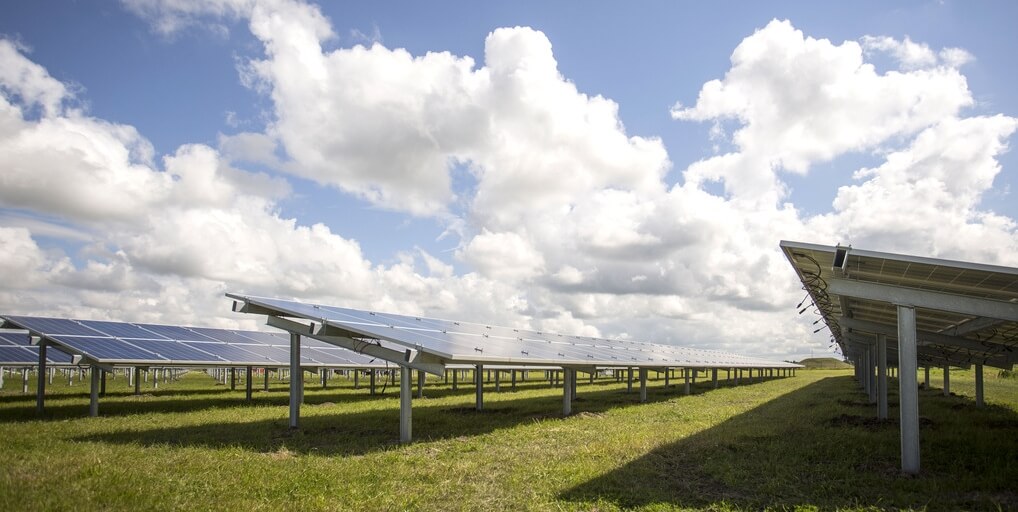Solar panels are touted as one of the best sustainable energy sources for homes and facilities that run on electricity. These panels give us access to a powerful and renewable energy source. But as much as these panels are perfect for home and commercial use, they work more efficiently in a large-scale context.
With a multitude of solar panels, it is possible to generate enough solar energy to power whole communities and essential establishments. This is where solar farms come in.
What is a Solar Farm?
A solar farm, also referred to as a photovoltaic power station, is a large, decentralized solar panel array that supplies electricity to the power grid. This can include ones owned by larger utility companies and other ground-mounted solar panel arrays big enough to provide power to many homes and establishments.
The scale of solar farms can range from at least 1 megawatt to more than 800 megawatts. The land size required for creating a solar farm is approximately 1 hectare for every 1-megawatt installation.
Key Factors to Consider When Building a Solar Farm
Size matters
A solar farm needs to cover a relatively large land area to provide the required power. This doesn’t only cover the solar arrays, but also other equipment such as the inverters and the spaces in between the rows to make room for repairs and maintenance.
Build time
The time it would take to complete a project entirely depends on the size of the solar farm and the number of builders involved, which can be done in a span of months. However, getting the necessary permits is another matter.
Making the (electrical) connection
If the land is near electrical power lines, it’s more feasible to connect the arrays to the grid or a centralized power source that distributes electricity.
Maintenance
One of the important factors to consider is the farm’s close proximity to a cleaning facility or water source since this will determine how efficient those panels will be cleaned and maintained regularly.
Number of panels needed
To arrive at a specific number, the best way to start is to determine the needed kWh output, then work your way backwards. Pulling this off will require a clear understanding of how much energy a solar panel provides. This can be done by calculating for the solar panel production for the area using a calculator.
Benefits of a Solar Farm
There are many benefits to relying on solar farms to power your community. These include:
Zero noise pollution
Solar farms generate zero noise pollution, as they are made of non-moving components and use a soundproof box to house inverters. Because of this, they can be built much closer to load centers, as they are less likely to disrupt the local environment. As a result, energy transmission is less difficult, and line losses are reduced. This also increases their overall efficiency.
Better plant and animal habitats
Lands typically used for solar farms are grasslands with hedges. This allows local wildlife and plants to continue thriving with little interference from the solar panel array.
Solar farms can create biodiversity and habitat provisions while mitigating flood and soil erosion and increase pollination rates in their respective sites. In addition, these lands can be used for animal grazing, helping local livestock thrive.
Reduction of carbon emissions
Solar farms rely on the sun—a clean energy source—which ensures that the power produced from these sites is 100% renewable. The process of solar panels converting sunlight to electricity has minimal carbon emissions, making it a more viable source of energy.
Furthermore, power supplied by solar farms to main grids allows for the wider distribution of clean energy.
Global adoption
The sun shines everywhere across the world—even in countries like Iceland, which receive approximately 5 hours of daylight during the winter solstice. Combined with the minimum specifications for solar farm locations, these sites can easily provide renewable energy alternatives anywhere across the globe.
Effective power alternatives for communities
Solar farms are effective power alternatives for all kinds of communities for several reasons.
Firstly, they can provide power to communities at lower costs than traditional utility electricity. Secondly, by providing energy to the main grid, communities can take advantage of green energy without installing solar panels, which is ideal in areas with more stringent build requirements.
They can also be used in rural areas, as they have very few provisions. Lands used for solar farms can still be used for other agricultural purposes and restored for other uses with minimal damage.
Sustainability in Solar Farms
Solar farms are an emerging model for making green energy more accessible to the public. They can be installed virtually anywhere where the sun shines and have minimal effects on the local environment. The power generated from these farms can help lower electricity bills, making it both sustainable and economically viable.
Tap into the potential for solar farms and contact SolarNRG for a free quote today.

Recent Comments